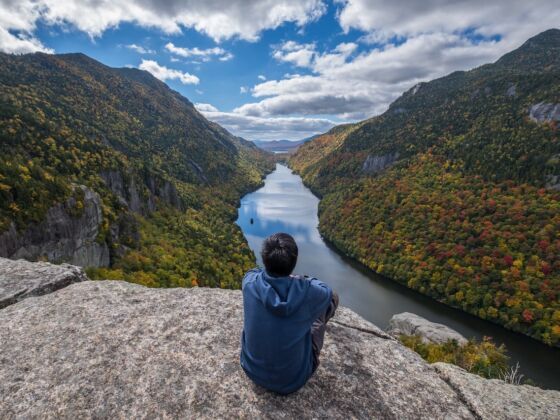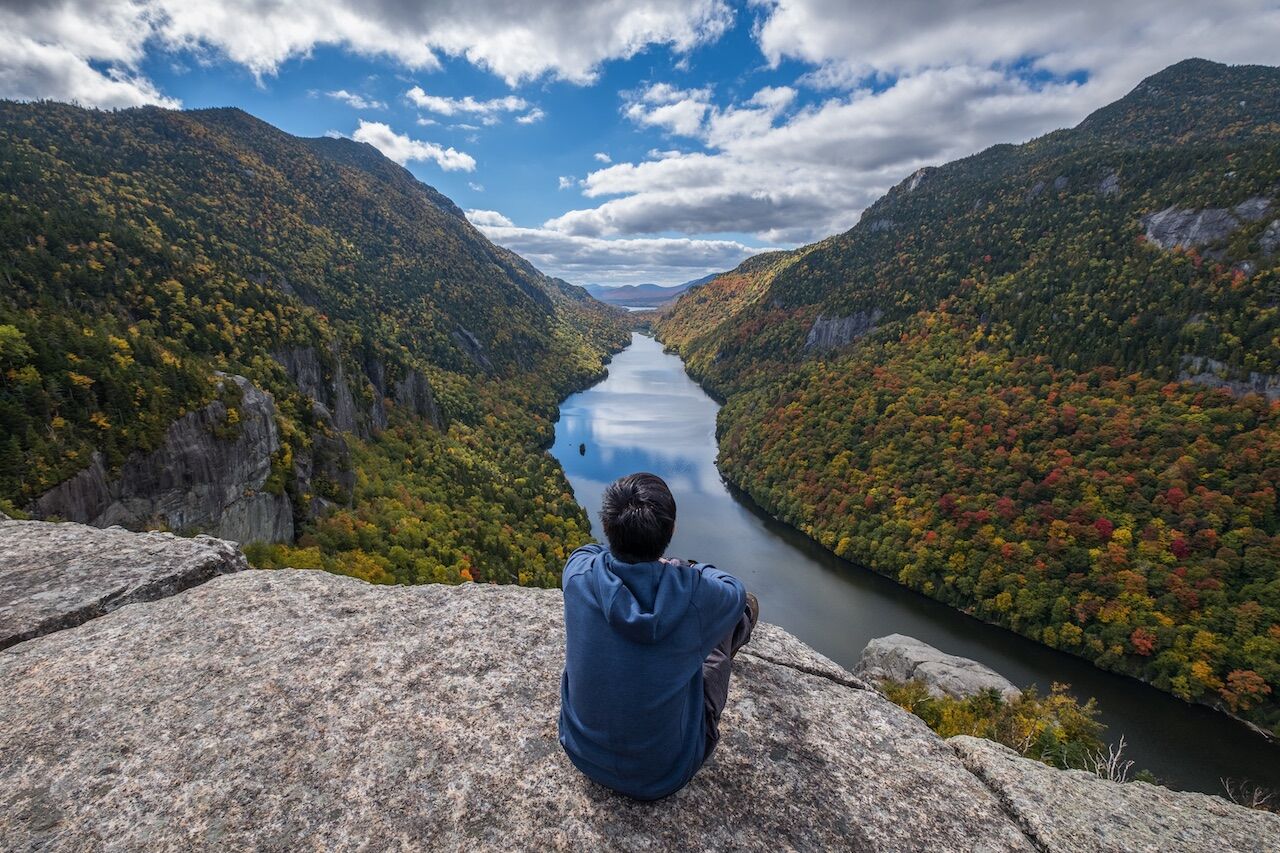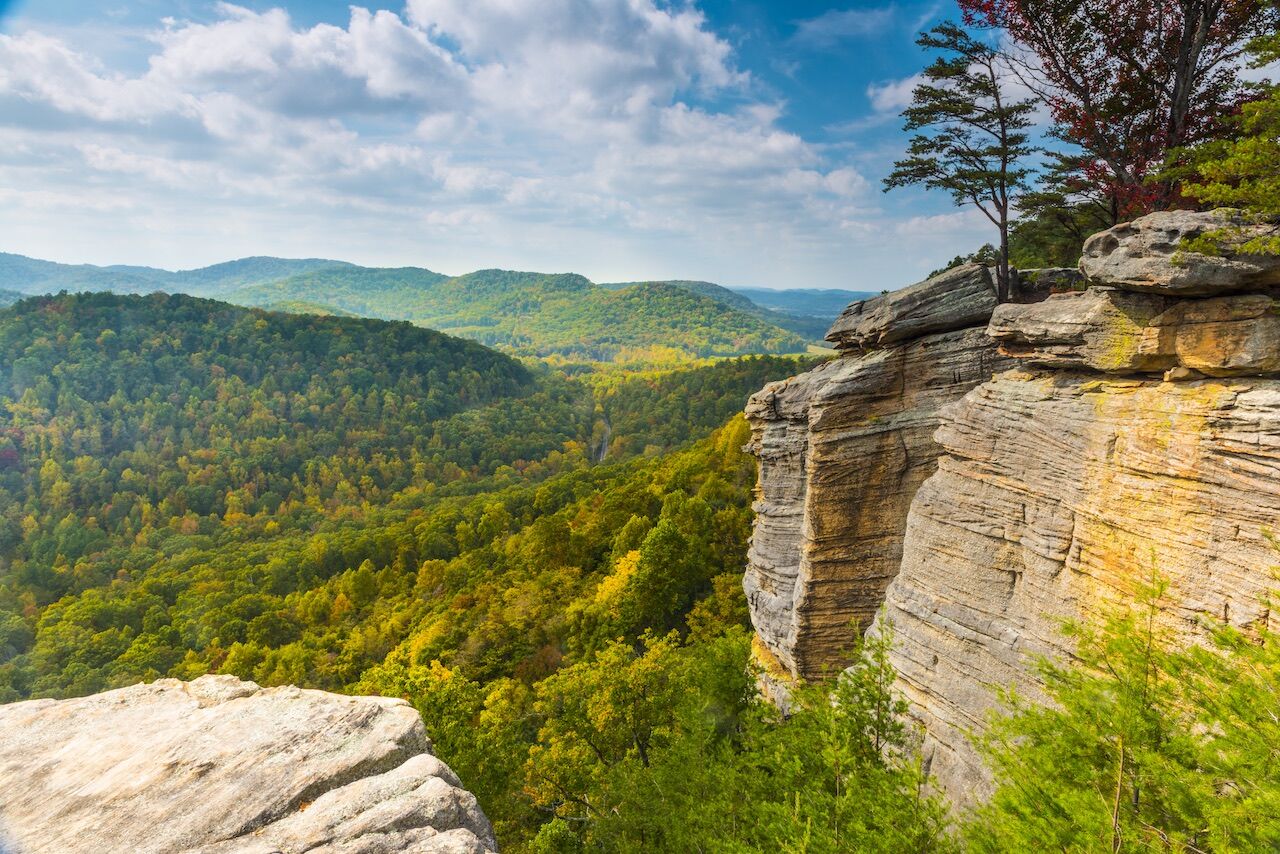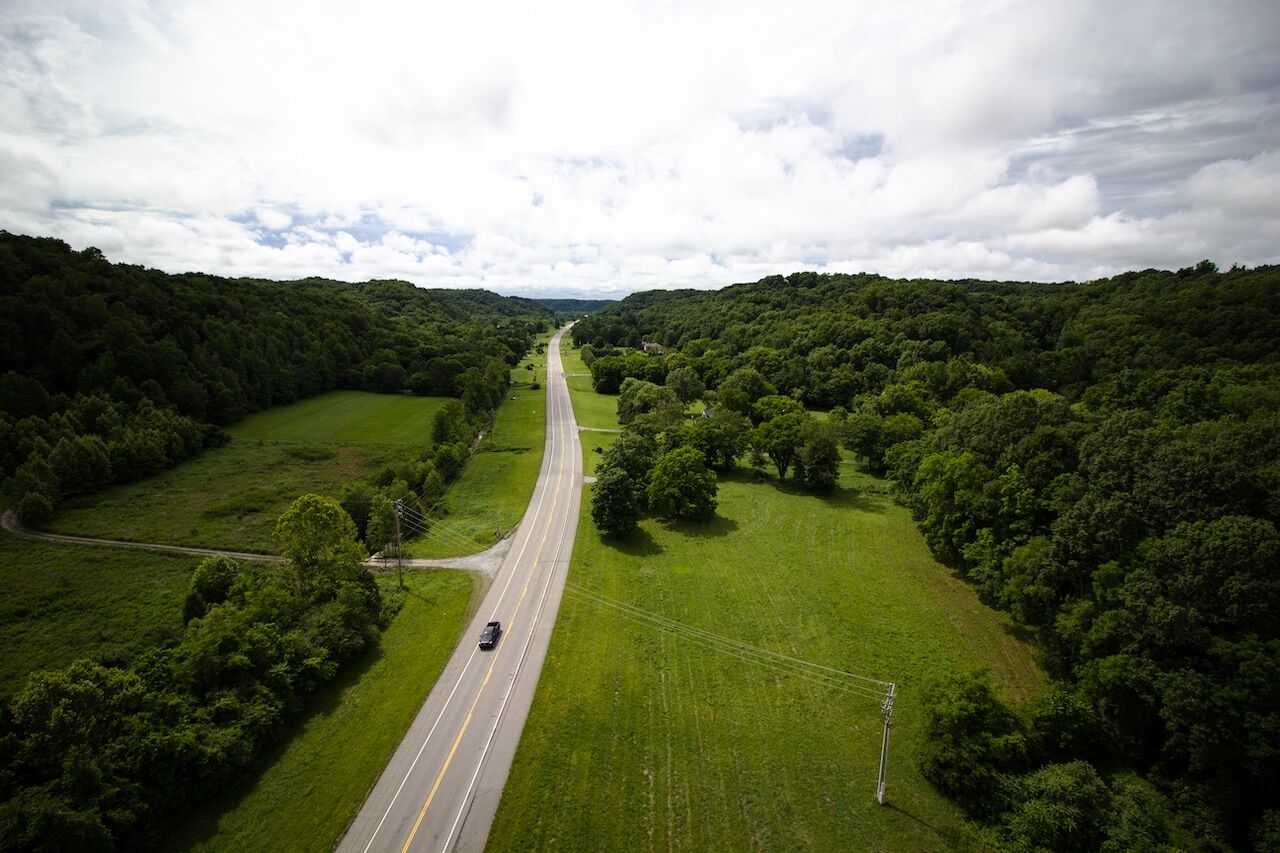Adirondacks, New York
The difference between New York City and upstate New York is drastic. For example, Adirondack Park is larger than any western national park. The park is nearly three times larger than Yellowstone, and bigger than some eastern states. It is a historical landmark in the United States’ push for publicly accessible wilderness and has equal standing with Yosemite. Between kayaking Lake Champlain and deep wilderness backpacking trips in the great range, I found a lifetime’s worth of trip ideas.
Northern Appalachians
One of my first experiences with eastern ranges was a hike up Mount Katahdin in Maine. Not seeing how a mile-high mountain could be a challenge, I gauged this hike might take four hours. Those who’ve hiked the Appalachian Trail or anywhere in Baxter must be floored by that statement. It was a savage, all-day affair, even for this Californian who’s used to hiking 14ers. Somewhere in between the precipitous scramble along the Knife’s Edge and the perfectly mirrored reflection of “The Great Mountain,” I half-walked and half-limped my way toward a genuine reverence for this range.
Little River Canyon and Talladega National Forest, Alabama
No trip through the South would be complete without seeing its Grand Canyon. The Little River Canyon drives straight through the plateau of Lookout Mountain and carves an impressive 800-foot gorge. There’s a substantial amount of unexplored rock climbing and river running through the uncrowded area. Further southwest, the Talladega National Forest protects the tallest mountains of the state. Mt Cheaha is a relatively short mountain, but has epic vistas which reminded me of something out of the Northern California foothills. Lastly, there’s Oak Mountain State Park which is one of only 50-something best mountain-biking destinations named by the International Mountain Biking Association.
West Virginia
New River Gorge is an obvious candidate for the best known natural feature of Appalachia, and seeing it in person was surreal. Sure the Grand Canyon is wider and deeper but the New River is the oldest river on the continent, slowly carving its way over 325 million years (over four times older than the Colorado River). The sheer remoteness of Seneca Rocks, Spruce Knob, and Canaan Valley along with the hidden beauty of Pocahontas County are just the tip of the iceberg for the mountaineer’s state. I haven’t had the extensive travel experiences here as I have in New England, but I left with an encyclopedia-length list of things I’d return for.
Charleston, South Carolina
Charleston is a more coastal version of Asheville, exhibiting surprisingly accessible Southern elegance. It remains delightfully available to even the most economical of travelers. Downtown Charleston had the full range of restaurants, historical sites, and bright southern architecture. Even a wilderness-loving guy like me found enjoyment among the tourists. James Island and Folly Island had very affordable accommodations and a great beach for 20-30-somethings while Kiawah Island was a millionaire’s paradise (however, there’s a great public beach on the island where you can wander one of the country’s best shorelines). Kayaking through marshes full of dolphins and under all the Palmettos and Spanish moss almost made me not miss the coast of California.
Asheville, North Carolina
Asheville exemplifies Appalachian chic. It’s a city that’s elegant but accessible to anyone, and the locals are quite friendly. It’s also large enough and historical enough to have developed its own culture while supporting a thriving 20-30-something scene. Asheville’s a lot like Denver in that respect (and the nearby Black Mountain is like Boulder). Perhaps it was just the crowd I was running with, but it seemed like everything revolved around nature and outdoors. There wasn’t an off-season, just different outdoor sports tin perfect weather. Hiking the Black Mountain Traverse and mountain biking the nearby Brevard Dupont State Forest are not to be missed.
Pennsylvania mountain biking
The number of mountain biking trails in Pennsylvania expands every year. The state has developed excellent cross-country road biking, but the technical singletracks are just as good. Ohiopyle is right in the heart of the Allegheny Trail and whitewater country. The Baughman, Sugarloaf, and McCune Trails were extremely technical, but I managed to survive and discovered yet another mountain biking Mecca.
Eastern Kentucky/Western Virginia
I put this here for two reasons: Firstly, it is an area of abundant natural beauty. The rugged ridge and valley areas around Wise, Norton, and Big Stone Gap look like waves frozen in time. The rugged semi-alpine summits of eastern Kentucky are frequently overlooked for more popular summits in North Carolina. However, the magnificence of the mountains contrasts with the significant degree of rural poverty that permeates the region. Appalachia has some of the most frequently overlooked, yet persistent poverty in this country. As a family practice student in rural Maine, I was no stranger to rural poverty. I hope that I can continue to be involved in advocacy for the rural poor even though I’m now in the big city.
Coastal Maine
I’ve kayaked extensively through the Channel Islands of Southern California and Northern California’s Lost Coast, along with a few jaunts through Washington’s San Juan and Alaska’s Inside Passage. It takes a lot to impress this paddler. Nevertheless, my first 100-mile expedition of the Maine Island Trail was equally adventurous but distinctly Atlantic. Maine has a “drowned coast”; what was once a mountain range is now innumerable archipelagos and rugged coastlines. These tens of thousands of islands, which are mostly preserved in their natural state, make this coast a northerner’s Caribbean.
Natchez Trace and Vicksburg, Mississippi
Natchez Trace Parkway is a favorite among cross-country bikers. This road follows a historical route though the state and follows along rivers and marshes that are as pretty as any mountain. Something which shouldn’t be missed in Mississippi is Vicksburg National Military Park. This park is as well preserved as Gettysburg and hold about as much historical significance. Vicksburg is built on the Mississippi River bluffs and was a perfect military base in the Civil War. It was a strategic stronghold that anchored the Mississippi River to the Confederate States. The lengthy trench warfare and siege was some of the fiercest fighting of the war. Once captured, Vicksburg divided Louisiana, Texas and Arkansas from the rest of the South and was instrumental in ending the war. The battlefield is meticulously preserved with monuments for every state that was involved in the battle.










